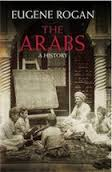Author: Walt Whitman
Title: Leaves of Grass (Deathbed Edition)
Genre: Poetry
Year: 1892
Pages: 400
Origin: read on the iPad
Nod Rating: 2 nods out of 5
For a long time
Leaves of Grass has held a fascination with the
Worm. A seeming modest collection of poems, the book has a long list of
admirers from its initial date of publication to the present day. The Worm has
gazed at various publications of the collection in many book-shops, always
wondering whether or not to take the plunge. Such is Whitman’s association with
America
– and late nineteenth-century American history – that the Worm was scared off
due to not knowing enough about the period to really savour and enjoy his
supposed talent for stringing words together.
The Worm was able to download Leaves of Grass recently.
However, unfortunately for him, it was not the modest volume thumbed on many a
book-case, but rather the final edition of Whitman’s collection. Due to
spending the bulk of his life revising and rewriting his initial publication
from 1855, the final “death-bed” edition of Leaves of Grass runs to
over four-hundred poems.
Ah, the Worm hears you say, quality and quantity: what a
rare treat. Indeed, dear reader, both of those Qs together is a rare treat. But
such a treat is not to be found within the pages of Walt Whitman’s Leaves
of Grass. Allow the Worm to explain why…
Firstly, the scope of this collection of poems is too vast
to be about anything in particular. A short volume is succinct and allows the writer
and poet to express their thoughts and feelings on a subject. But four hundred
poems? Why does Whitman need four hundred poems to say what other poets could
say in ten? Whitman attempts to encompass as much as possible about American
culture as it then stood in the late-nineteenth century. However, by doing this
he runs the risk of becoming all sound and fury, signifying nothing.
Whitman’s tool for attempting to cover everything: listing.
This is a technique used in order to outline basic information. Whitman uses it
– armed with the almighty comma – as a poetry technique. We’re given a list on
the American vastness, on its people, on its past, on its potential, the
paving-man, the canal boy, the conductor, the child, the regatta, the drover,
the peddler, the bride, the opium-eater, the prostitute, the crowd, the
President: list, list, list! Rather than poetry it reads like a sermon, a Bible
of lists of America.
This “listing” technique is further exacerbated by the lack of any rhyme or
meter. Words are chucked together, with no regard for length, structure, or
fluidity. Whitman continues to rewrite throughout his life, but seemingly, he
does not edit. More words and piled on top of one another, forever hoping to
get to the heart of the matter in what he truly means to say. But despite the
words stacking up, true meaning seems to elude him. Rather than take a step
back to think about such meaning Whitman continues to scoop on the words, one
after the over, until us – the readers – have our bellies filled with sickly
prose.
Now, such words
appear to be harsh. They are meant to be harsh. However, the Worm did manage to
enjoy or poem or two of this ridiculously massive collection. There are lines
to be enjoyed: ‘Who goes there? Hankering, gross, mystical, nude; How is it I
extract strength from the beef I eat?’ Regrettably, such lines are hemmed
within a sea of merciless listing.
Before his death, Whitman noted how he wished for the final
“death-bed” edition to supersede all previous ones. The next time the Worm
touches Whitman it will be the first edition of Leaves of Grass only. Life is
far too short to wade through the listing that Whitman should be – but
seemingly isn’t - infamous for. But such is Whitman’s legend and hold over the United States of America,
the Worm is not holding out for such a critique to gain any foundation.
Read all about it here

























